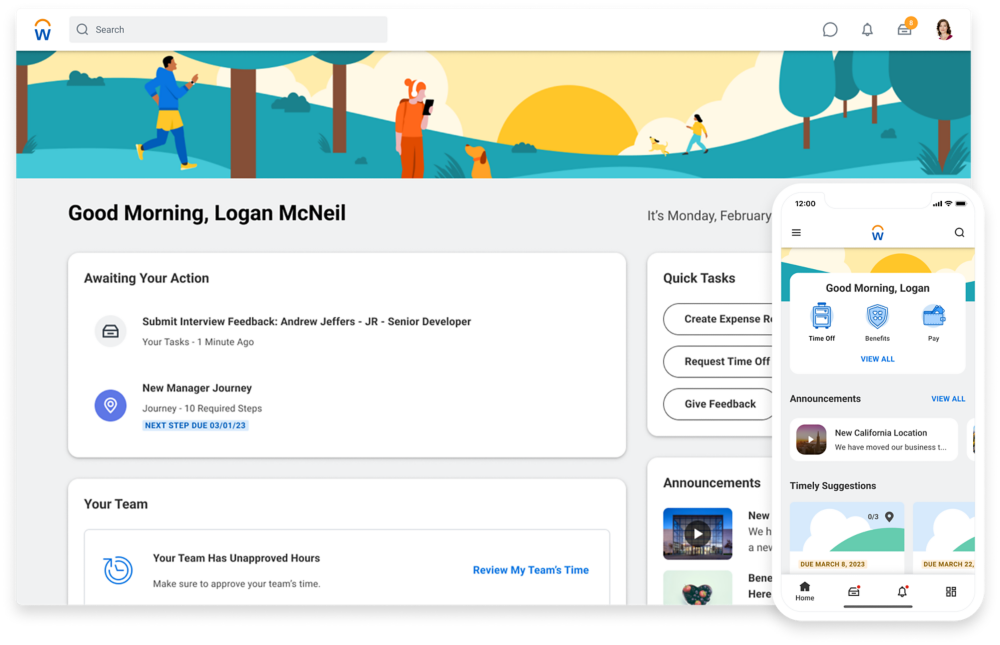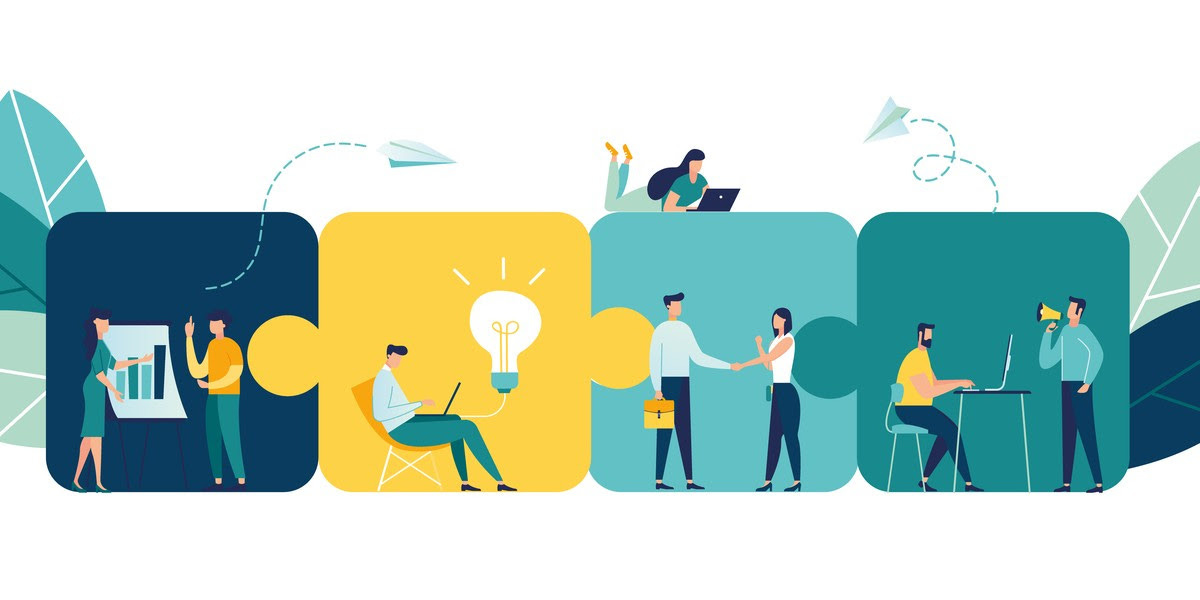AI is Dissolving Software Boundaries
Technology is evolving at lightning speed in the AI era, and we're witnessing a fascinating phenomenon: the dissolution of traditional software boundaries.
Three things you’ll get from TWIP today…
The Great Software Convergence in the AI Era - The boundaries between different software categories are vanishing, giving rise to a new era where the user journey takes center stage.
Twelve Predictions for the Future of Technology from Vinod Khosla.
News from this week that matters for product leaders
The Great Software Convergence in the AI Era
We’re witnessing a seismic shift in the world of software. What once was a landscape defined by clear-cut categories—CRMs for customer management, ERPs for resource planning, AdTech for advertising, and so on—is now rapidly converging.
In this era of convergence, it’s not just about building software that serves a function. It’s about crafting experiences that seamlessly guide users through their journeys, integrating previously siloed functions into holistic solutions.
My exploration into this new era of blurring software boundaries was triggered after I read Are CRMs Dead?, a feature story on Indian CCaaS pioneer Ozonetel, which was published on ProdWrks - our publication and community dedicated to uncovering insights from product leaders on how they’re shaping the future of their industries.
Ozonetel is India’s first CCaaS platform. They build software that sits behind the call center agents’ desktops. The professor-turned-founder of Ozonetel, Chaitanya Chokkareddy reveals a powerful insight.
“CCaaS is now CX,” Chaitanya boldly proclaims and adds, “CRMs don't make any sense anymore. Nobody is following the whole concept of lead-opportunity flow. It’s all about the customer journey.”
The Death CRMs: Embracing the Unified Customer Experience
According to Chaitanya, CRMs, the software that was once rigid and function-focused, is now becoming fluid, adapting to the contours of the customer’s journey in real-time.
Since all touchpoints in the customer journey are controlled by CCaaS providers like Ozonetel, Chaitanya believes it’s sensible to build CRM-level capabilities and more on CCaaS platforms that can manage entire customer journeys, rather than integrate with a separate CRM system like Salesforce.
Chaitanya says, “CCaaS has now become CX. Businesses want to provide a better customer experience across multiple touchpoints by understanding how to service customer needs based on where they are in the customer journey. So contact centers are not just about facilitating communication; they're about the entire customer journey.
This evolution of CCaaS into CX isn't merely an upgrade; it's a paradigm shift made possible by the advancements in AI and ML which can instantly recognize and give call center agents complete context about the historical data on any customer’s interactions with the business across multiple touchpoints and channels, and at any time.
So, the CRM which was once the cornerstone of customer relationship management, is now being overshadowed by platforms that prioritize holistic customer journeys over siloed contact management.
And, this convergence of CCaaS and CRM isn't confined to customer experience software.
ERP and SCM: The Fusion of Internal and External Worlds
Consider the realms of Enterprise Resource Planning (ERP) and Supply Chain Management (SCM). Traditionally, ERP systems managed internal resources—finance, HR, production—while SCM systems handled the logistics of moving goods from suppliers to customers. They were two sides of the same coin but operated in different realms.
Enter AI, and suddenly these worlds are merging. Modern ERP solutions like SAP S/4HANA are integrating advanced supply chain capabilities, dissolving the barriers between internal operations and external logistics.
Imagine a single platform where procurement decisions instantly influence production schedules, inventory levels adjust autonomously based on predictive analytics, and delivery timelines optimize themselves in response to real-time demand. This convergence doesn't just streamline operations; it empowers businesses with agility and foresight previously unattainable.
Reimagining HR: From Administrative Function to Employee Experience
Human Resources is another domain undergoing a profound metamorphosis.
Historically, HR systems were administrative tools—repositories for employee data, payroll, benefits, and compliance reporting. Employee engagement? That was someone else's department.
Today, AI is fusing HR management systems with employee engagement platforms, creating tools that not only manage but enrich the employee experience.
Companies like Workday are leveraging AI to provide personalized career development plans, real-time feedback mechanisms, and predictive analytics that identify and address workplace issues before they escalate.

The result? HR is evolving from a back-office function to a strategic partner in cultivating talent and shaping organizational culture. It's about enhancing the human experience at work, not just managing human resources.
Marketing’s New Power Couple: The Synergy of AdTech and MarTech
Marketing technology is perhaps where this convergence is most palpable.
AdTech and MarTech have traditionally occupied separate spheres—one focused on paid advertising channels, the other on owned media and customer engagement. But AI is uniting them in powerful ways.
Platforms like Adobe Experience Cloud are integrating AI-driven AdTech capabilities into their MarTech suites, enabling marketers to orchestrate campaigns that seamlessly blend paid and organic strategies.
AI analyzes customer behavior across channels, optimizes ad spend in real-time, and personalizes content to engage customers at every touchpoint.
This fusion allows brands to tell cohesive stories that resonate deeply with audiences, driving engagement and loyalty like never before. It's no longer about isolated campaigns; it's about creating an ongoing dialogue with customers.
SecOps and ITOps: Unifying for Proactive Resilience
In the realm of IT, the stakes are higher than ever. Cyber threats are escalating, and system uptime is mission-critical.
Historically, Security Operations (SecOps) and IT Operations (ITOps) have operated in silos, often leading to gaps in coverage and delayed responses to threats. But AI is changing that by unifying these functions.
Platforms like Splunk and ServiceNow are leveraging AI to monitor system performance and security threats simultaneously, enabling proactive responses that protect assets and maintain uptime. This convergence not only enhances security but ensures that IT infrastructure supports business objectives without interruption.
The Profound Shift: It’s All About the Journey
So, what's driving this great convergence?
At its core, this shift is about focusing on the journey—whether it's the customer journey, the employee journey, or the data journey within an organization.
AI enables us to map, understand, and enhance these journeys in ways previously impossible. By breaking down the barriers between software categories, we create holistic solutions that address needs comprehensively rather than in isolation.
This transformation challenges us to rethink how we design and build products. It's no longer sufficient to solve a single problem or optimize a specific function. The real value lies in crafting experiences that are seamless, intuitive, and deeply attuned to the user's evolving needs.
Opportunities Ahead: Building the Future Through User-Centric Design
As product thinkers and builders, we're standing at the threshold of immense opportunity. The dissolution of software boundaries means we can reimagine solutions from the ground up.
By harnessing AI, we can identify friction points in user journeys and develop innovative products that not only solve problems but anticipate them.
Consider how Tesla redefined the automobile by integrating hardware and software into a cohesive whole, or how Apple’s ecosystem seamlessly connects devices and services to enhance user experience. These aren't just products; they're holistic experiences that have set new standards in their industries.
These examples underscore a critical insight: those who focus on the entire journey, who see beyond functions to the broader experience, will be the ones who truly define the future.
Embrace the Convergence
In this era of convergence, let's challenge ourselves to think beyond traditional categories. Let's ask profound questions:
How can we leverage AI to create products that transcend conventional boundaries?
What unarticulated needs exist in the user journey that we can address?
How can we build solutions that are not just tools but partners in the user's experience?
The future belongs to those who see beyond the software, and who understand that at the heart of every product is a human journey waiting to be enriched.
One video you must watch this week…
12 Predictions for the Future of Tech, from Vinod Khosla.
Techno-optimist Vinod Khosla believes in the world-changing power of "foolish ideas."
In his TED talk, Khosla anticipates that expertise, including healthcare and education, will become largely free or near free due to technological advancements. He also expects computing to become a utility, labor to be taken over by robots, and AI to revolutionize industries such as music and medicine.
Throughout the talk, Khosla emphasizes the importance of a few motivated entrepreneurs in making these technological advancements a reality. Are you one?
Also, read…
📰News from this week that matters for product leaders
OpenAI's ChatGPT growth continues: OpenAI announced on Thursday that its chatbot, ChatGPT, now boasts over 200 million weekly active users, a figure that has doubled since the same time last year. The usage of its automated API has also doubled since the introduction of ChatGPT-4o mini in July. Data also reveals that 92 % of Fortune 500 companies are now OpenAI.
Chenn.AI connected - Tamil Nadu plugs into Google's AI mainframe: The global major has signed a deal with the Government of Tamil Nadu to skill 2 million youth in AI via Naan Mudhalvan, collaborate with startups, and enable micro, small, and medium enterprises (MSMEs) and the rural economy with advanced technology. The collaboration will focus on initiatives in key areas such as AI start-up enablement, skilling, and industrial ecosystem enablement, including MSMEs, to create impactful, scalable AI solutions.
Canva says its AI features are worth the 300 percent price increase: The price of Canva subscriptions are set to increase by just over 300 percent in some instances and Canva says the increase is justified due to the “expanded product experience” and value that generative AI tools have added to the platform. Canva has released a deluge of generative AI features over the last few years, such as its Magic Media text-to-image generator and Magic Expand background extension tool.
Indian Govt unveils agri startup fund and investment portal: Union agriculture minister Shivraj Singh Chouhan on Tuesday launched two initiatives — a fund aimed at boosting farm-sector startups, and a single-window portal to process investments - AgriSure, a ₹750-crore fund to support startups, and Krishi Nivesh Nidhi, the portal to speedily clear project proposals.
Drone startups zoom in on India more than UK and China, double in count over 3 years: India has emerged as one of the hottest destinations for drone startups, beating the UK and China. As of August 2024, data from Tracxn, a data platform, shows that India had 398 drone startups operating across the country, more than double the 157 startups that existed three years ago when the rules were implemented. China boasted 298 startups as of August, compared with 204 three years ago, whereas the UK’s ecosystem has expanded to 298 startups from 192 in August 2021.
I hope you enjoyed this week's curated stories and resources. Check your inbox again next week, or read previous editions of this newsletter for more insights. To get instant updates, connect with me on LinkedIn.
Cheers!
Khuze Siam
Founder: Siam Computing & ProdWrks







